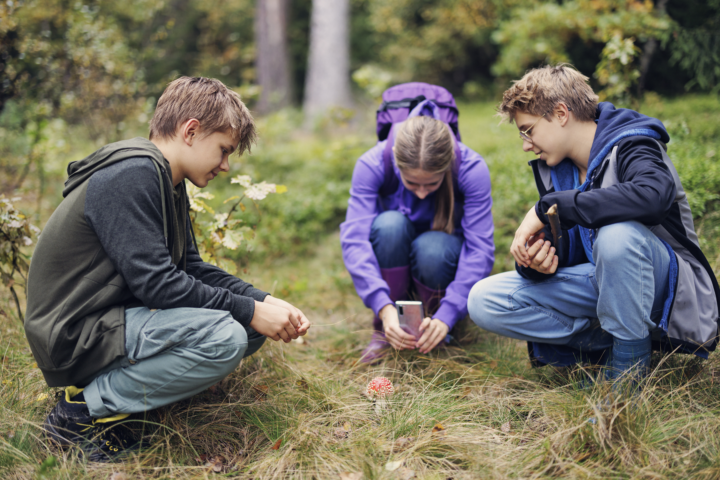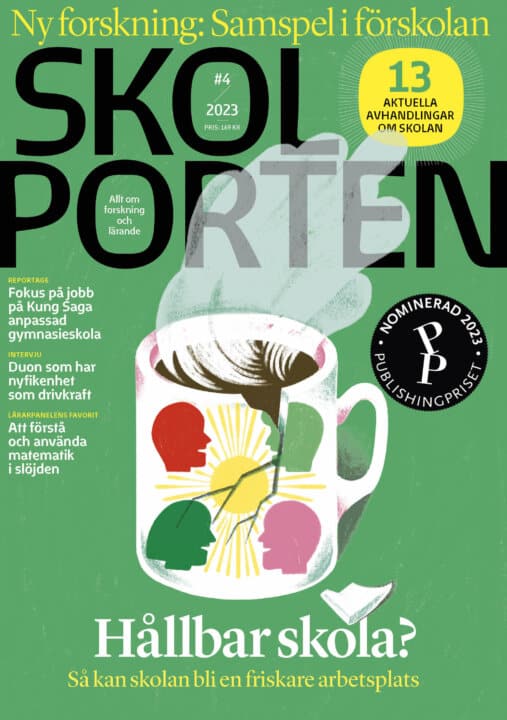Klassrummets semiotiska resurser. En språkdidaktisk studie av skolämnena Hem- och konsumentkunskap, Biologi och Kemi
Anna Maria Hipkiss har forskat om klassrumsdesign och klassrumskommunikation. Syftet med avhandlingsarbetet är att undersöka hur semiotiska resurser samverkar i meningserbjudanden i hem- och konsumentkunskap, kemi och biologi.
Anna Maria Hipkiss
Ann-Catrine Edlund, Per-Olof Erixon
Per Holmberg, Institutionen för svenska språket, Göteborgs universitet
Umeå universitet
2014-11-21
Klassrummets semiotiska resurser. En språkdidaktisk studie av skolämnena Hem- och konsumentkunskap, Biologi och Kemi
Institutionen för språkstudier
Abstract in English
This thesis focuses on how different semiotic resources, such as spoken and written texts, artefacts and activities interact with classroom design and classroom communication in three school subjects in Swedish secondary school: Home and Consumer Studies, Biology and Chemistry. The research process has been concerned with the affordances that are created through different semiotic resources in classroom design and in classroom communication in the three school subjects, focusing on academic language and student participation.
The study used an ethnographic approach, employing multiple methods for material production and analysis. Video and audio recordings formed the foundation for analysis. Material production also includes field notes, photographs and interviews with teachers and students.
The research draws on sociocultural theory using a three-legged theoretical framework based in sociocultural theory. Basil Bernstein’s sociological theories were used as an overarching theory for understanding the results. The sociosemiotic theories of Systemic Functional Linguistics (SFL) and Social Semiotic Multimodality were adopted for analyzing classroom design and classroom communication.
This study shows that classroom design and classroom communication are tied together. Classroom design presents affordances for a subject’s ideational and interpersonal meaning. These affordances are reproduced in classroom communication. In classrooms with subject-focused design, classroom communication is school-focused. Learning is segmented without connection between school subjects or other contexts. In one classroom, designed to create relevance for both school and everyday knowledge, communication is both school-focused and also creates relevance for students’ use of the contents in other contexts. Learning in this classroom is cumulative and students’ participation and meaning-making is integrated in teaching and design.
This study also shows how different semiotic resources influence teacher’s and students’ linguistic choices. Vertical discourse, i.e. abstract and distant academic language, is realised in written texts such as text books and whiteboard texts. Few other artefacts introduce and encourage participants’ vertical discourse. Teacher and student communication realises mainly horizontal discourse, i.e. context embedded everyday language. Classroom communication provides few opportunities for students to appropriate academic language through semantic waves, as academic language is only unpacked into everyday language and not repacked into academic language.
Relaterade länkar

Biologi
 Åk 7–Vux
Åk 7–Vux Hållbar utveckling i förskolan
 Fsk
Fsk 




